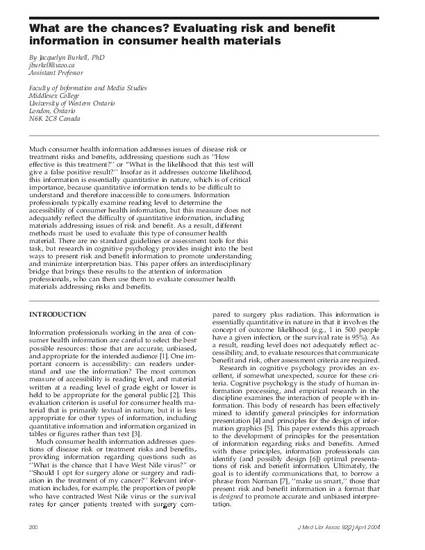
Much consumer health information addresses issues of disease risk or treatment risks and benefits, addressing questions such as ‘‘How effective is this treatment?’’ or ‘‘What is the likelihood that this test will give a false positive result?’’ Insofar as it addresses outcome likelihood, this information is essentially quantitative in nature, which is of critical importance, because quantitative information tends to be difficult to understand and therefore inaccessible to consumers. Information professionals typically examine reading level to determine the accessibility of consumer health information, but this measure does not adequately reflect the difficulty of quantitative information, including materials addressing issues of risk and benefit. As a result, different methods must be used to evaluate this type of consumer health material. There are no standard guidelines or assessment tools for this task, but research in cognitive psychology provides insight into the best ways to present risk and benefit information to promote understanding and minimize interpretation bias. This paper offers an interdisciplinary bridge that brings these results to the attention of information professionals, who can then use them to evaluate consumer health materials addressing risks and benefits.

Originally published in the JMLA